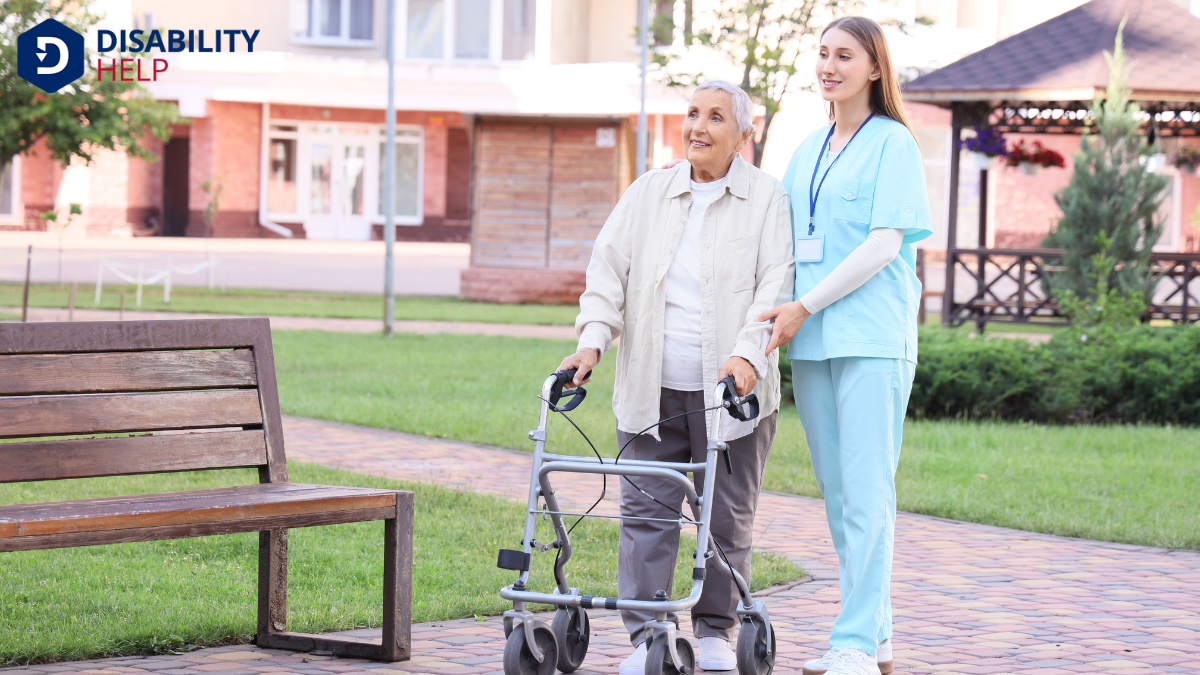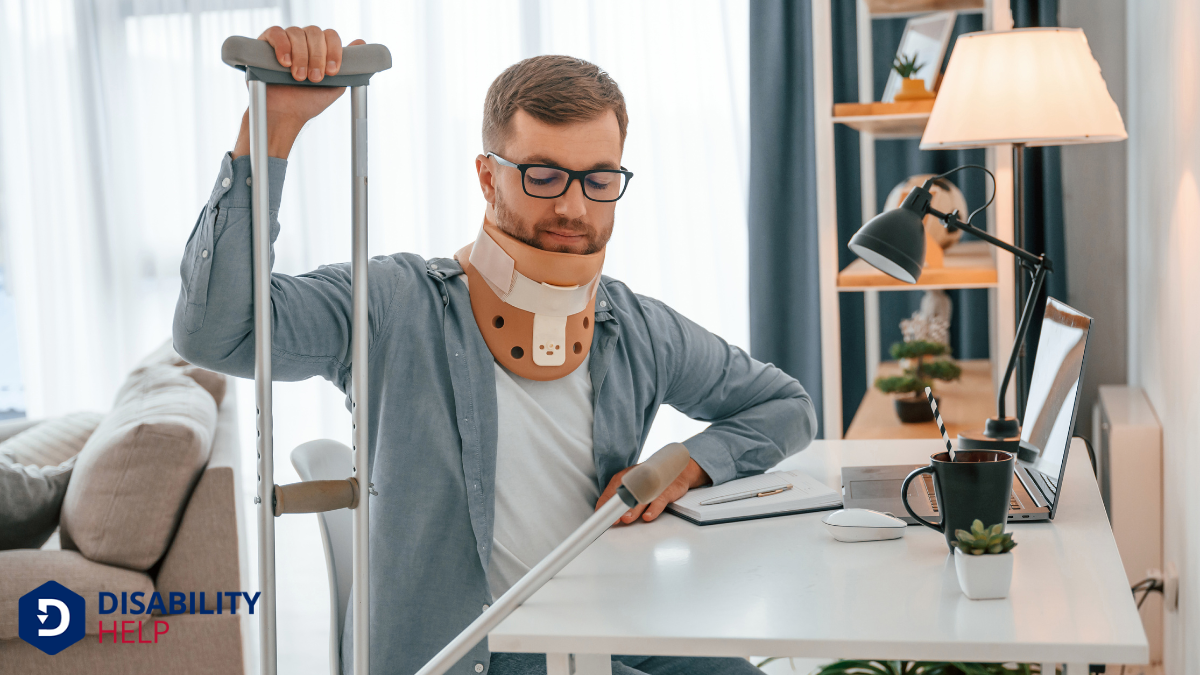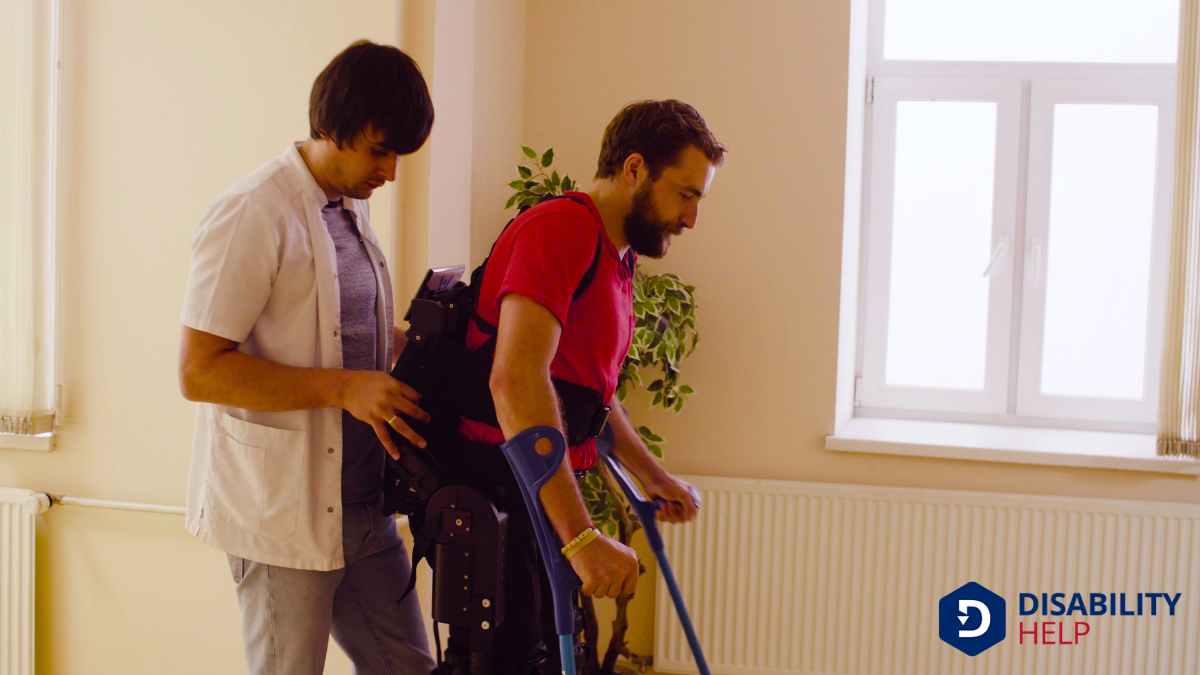Let's explore the world of assistive devices and how they empower individuals by enhancing mobility. From wheelchairs and walkers to canes and mobility scooters, these tools are essential in providing support and independence for many. As we navigate the various options, we'll uncover how each device serves unique needs and situations. Ready to discover which assistive devices are most commonly used and why they matter so much?
Key Takeaways
- Manual and electric wheelchairs provide essential mobility support for individuals with varying levels of upper body strength.
- Mobility scooters offer convenient travel over longer distances, reducing fatigue and enhancing independence.
- Walkers and rollators provide stability and support, with features like seats and brakes for added safety and comfort.
- Canes and walking sticks enhance balance and confidence by distributing weight evenly and reducing joint pressure.
- Exoskeleton technology offers powered assistance for improved movement, aiding in rehabilitationThe process of helping individuals with disabilities achieve and maintain their optimal physical, se... and everyday activities.
Wheelchairs: Manual and Electric Options
When it comes to mobility, wheelchairs provide essential support, and choosing between manual and electric options depends on individual needs.
It's understood that manual wheelchairs are lighter and require arm strength to operate, making them ideal for those who can self-propel. They offer simplicity and are often more affordable.
On the other hand, electric wheelchairs offer independence for those with limited upper body strength. They’re powered by batteries, allowing us to navigate various terrains with ease and comfort.
We should consider factors like lifestyle, physical condition, and budget when choosing. While manual options are great for short distances or indoor use, electric wheelchairs deliver a broader range of motion.
It’s important we select a chair that fits our specific requirements.
Walkers and Rollators: Providing Stability and Support

Let's explore how walkers and rollators can provide the stability and support we need.
We'll look at the different types of walkers and the features that make rollators unique.
Plus, we'll share some safety and usage tips to guarantee we're making the most of these essential mobility aidsDevices designed to help individuals move around more easily, such as canes, walkers, or wheelchairs....
Types of Walkers
While maneuvering the world with ease may be a challenge for some, the right types of walkers can greatly enhance mobility and independence.
We've several options to explore, each catering to different needs. Standard walkers provide solid support with a simple frame and no wheels, ideal for short distances.
Two-wheeled walkers offer a similar design but with added front wheels, making it easier to glide forward without lifting.
Three-wheeled walkers, more compact and nimble, suit those traversing tighter spaces.
For those needing brakes and a seat for resting, four-wheeled walkers, or rollators, might be suitable, though we'll examine them later.
Rollator Features Overview
Rollators, a popular choice among mobility aids, come packed with various features designed to offer both stability and convenience.
As we explore these features, let's focus on what truly enhances our mobility experience.
- Wheels: Most rollators have four wheels, enabling smoother movement over different surfaces compared to standard walkers. This design reduces the effort needed to move forward.
- Brakes: Hand brakes are essential for safety, allowing us to control our speed and stop when necessary, providing peace of mind.
- Seats: Many rollators include a built-in seat, offering a convenient resting spot during longer outings or when fatigue sets in.
- Storage: A built-in basket or pouch provides space for personal items, making it easier to carry essentials like a wallet, phone, or groceries.
These features make rollators a versatile choice for enhancing mobility.
Safety and Usage Tips
Guaranteeing safety while using walkers and rollators is essential, as these devices provide important stability and support.
Let’s focus on a few key tips to enhance their effectiveness. First, we should always adjust the height of the walkerA mobility aid with a metal frame and sometimes wheels, used by individuals who need additional supp... or rollator to match the user's wrist level when standingThe legal right to bring a lawsuit, which requires that the individual bringing the suit has a direc... straight. This guarantees comfort and minimizes strain.
Secondly, maintaining a clear path at home reduces tripping hazards. We should regularly check for loose rugs, cables, or clutter. It's also important to inspect the walker or rollator for wear and tear, guaranteeing brakes, wheels, and grips are in good condition.
Finally, when using these devices, always stand upright and walk at a steady pace. By following these tips, we can promote safer and more confident mobility.
Canes and Walking Sticks: Enhancing Balance and Confidence
Canes and walking sticks play a pivotal role in enhancing both balance and confidence for those who need a little extra support.
These reliable tools serve as an extension of our bodies, helping us achieve stability in various settings.
Let’s explore how they benefit us:
- Improved Balance: Canes help distribute weight evenly, reducing the risk of falls and allowing us to move with greater security.
- Increased Independence: By providing support, they empower us to navigate our environments more freely and confidently.
- Pain Reduction: They can alleviate pressure on joints, making walking less painful, particularly for those with arthritisInflammation of the joints, leading to pain, stiffness, and limited movement. or other mobility issues.
- Adjustable Options: Many canes are height-adjustable, ensuring a comfortable fit for users of all sizes, enhancing their overall effectiveness.
These tools truly enhance our daily lives.
Mobility Scooters: Freedom for Longer Distances
While canes and walking sticks offer tremendous benefits for short distances, sometimes we need more robust support for longer journeys. That's where mobility scooters come in. They provide us with the freedom to travel longer distances without the fatigue that can come from relying solely on walking aids.
With their user-friendly design, scooters are easy to operate and highly effective for outdoor adventures or even just a trip to the local store.
Mobility scooters come in a variety of models, each designed to suit different needs. Whether we require a compact version for easy transport or a heavy-duty model for rough terrains, there’s a scooter to match our lifestyle.
These devices empower us to maintain our independence and explore our surroundings with ease and confidence.
Crutches: Temporary Support for Injuries

When an injury sidelines us, crutches become invaluable allies, providing the temporary support we need to stay mobile while healing. They're designed to help us maintain balance and reduce weight on our injured leg or foot.
Crutches come in different types to suit various needs:
- Axillary crutches: These are the most common, with padded tops that fit under our arms for upper body support.
- Forearm crutches: Also known as elbow crutches, they offer more arm freedom and are ideal for long-term use.
- Platform crutches: These allow us to rest our forearm on a platform, beneficial for those with limited hand strength.
- Leg support crutches: They strap onto our leg, freeing our hands for other tasks.
Using crutches correctly guarantees safe and efficient movement.
Stair Lifts and Elevators: Accessing Different Levels
Maneuvering multi-level buildings can be intimidating for those with mobility challenges, but stair lifts and elevators provide the perfect solution.
These devices empower us to access different floors safely and independently. Stair lifts offer a smooth, seated ride along the staircase, ideal for homes or smaller buildings. They’re easy to operate and can fit most staircases.
Elevators, on the other hand, are more suitable for larger buildings and can accommodate multiple passengers or even wheelchairs. Whether we're installing them in a home or workplace, both options enhance accessibilityThe design of products, devices, services, or environments to be usable by people with disabilities.... and guarantee everyone can move freely without the fear of stairs.
Prosthetic and Orthotic Devices: Customized Solutions
Although mobility challenges can seem intimidating, prosthetic and orthotic devices offer customized solutions that greatly enhance our quality of life. These devices are tailored to our specific needs, providing support and improving mobility.
Let’s explore how they make a difference:
- Prosthetic Limbs: Designed to replace missing limbs, these devices help us regain functionality and independence, enabling us to walk, run, or even dance.
- Orthotic Braces: These devices support weak or injured joints, reducing pain and improving stability, so we can move with more confidence.
- Spinal Orthoses: By providing support to our back and spine, they help correct posture and alleviate discomfort.
- Customized Footwear: Specially designed shoes or insoles can relieve pressure and prevent foot-related issues, enhancing our daily mobility.
These solutions transform our mobility experiences!
Exoskeletons: Cutting-Edge Mobility Assistance

How do exoskeletons revolutionize the way we move? These innovative devices offer newfound freedom for those with mobility challenges. By providing external support and powered assistance, exoskeletons help us walk, stand, and even climb stairs with greater ease. They mimic natural movements and adaptA grassroots disability rights organization in the U.S. that focuses on promoting community-based se... to our unique needs, making them versatile tools for rehabilitation and everyday use.
We can see exoskeletons used in various settings, from physical therapy clinics to workplaces. They enhance strength and endurance, reducing the physical strain on our bodies.
As technology advances, exoskeletons are becoming lighter, more affordable, and easier to use. These wearable devices don't just enhance mobility—they empower us to engage with our surroundings and improve our quality of life.
Conclusion
In exploring mobility solutions, we've seen how various assistive devices empower and support those with mobility challenges. From wheelchairs and scooters to canes and customized footwear, each device plays a crucial role in enhancing independence and quality of life. Let's not forget the innovative exoskeletons and prosthetic devices that push the boundaries of what's possible. Together, these tools guarantee that mobility isn't a barrier but a bridge to a more active and fulfilling life.






